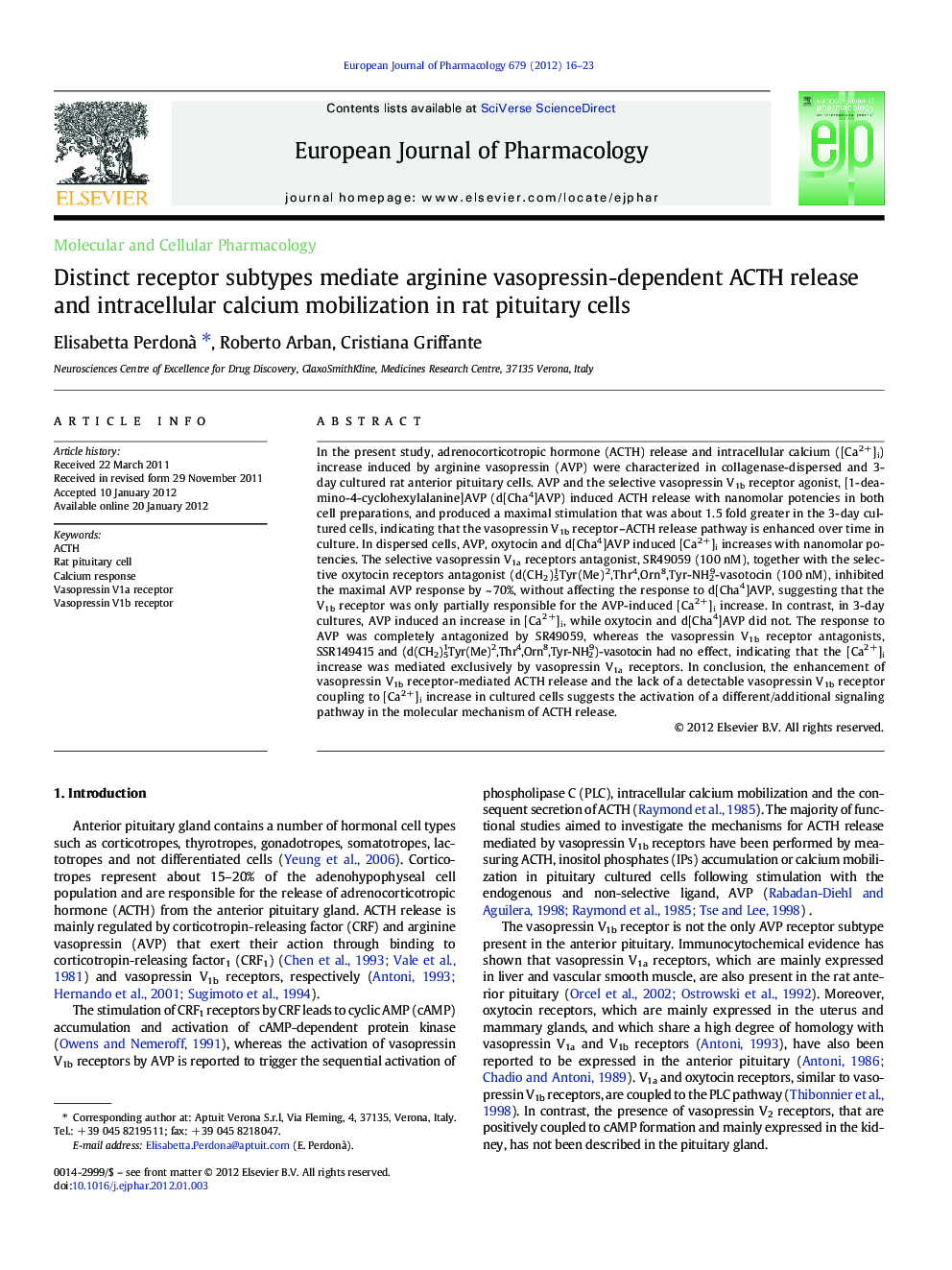| Article ID | Journal | Published Year | Pages | File Type |
|---|---|---|---|---|
| 5829753 | European Journal of Pharmacology | 2012 | 8 Pages |
In the present study, adrenocorticotropic hormone (ACTH) release and intracellular calcium ([Ca2+]i) increase induced by arginine vasopressin (AVP) were characterized in collagenase-dispersed and 3-day cultured rat anterior pituitary cells. AVP and the selective vasopressin V1b receptor agonist, [1-deamino-4-cyclohexylalanine]AVP (d[Cha4]AVP) induced ACTH release with nanomolar potencies in both cell preparations, and produced a maximal stimulation that was about 1.5 fold greater in the 3-day cultured cells, indicating that the vasopressin V1b receptor-ACTH release pathway is enhanced over time in culture. In dispersed cells, AVP, oxytocin and d[Cha4]AVP induced [Ca2+]i increases with nanomolar potencies. The selective vasopressin V1a receptors antagonist, SR49059 (100Â nM), together with the selective oxytocin receptors antagonist (d(CH2)51Tyr(Me)2,Thr4,Orn8,Tyr-NH29-vasotocin (100Â nM), inhibited the maximal AVP response by ~Â 70%, without affecting the response to d[Cha4]AVP, suggesting that the V1b receptor was only partially responsible for the AVP-induced [Ca2+]i increase. In contrast, in 3-day cultures, AVP induced an increase in [Ca2+]i, while oxytocin and d[Cha4]AVP did not. The response to AVP was completely antagonized by SR49059, whereas the vasopressin V1b receptor antagonists, SSR149415 and (d(CH2)51Tyr(Me)2,Thr4,Orn8,Tyr-NH29)-vasotocin had no effect, indicating that the [Ca2+]i increase was mediated exclusively by vasopressin V1a receptors. In conclusion, the enhancement of vasopressin V1b receptor-mediated ACTH release and the lack of a detectable vasopressin V1b receptor coupling to [Ca2+]i increase in cultured cells suggests the activation of a different/additional signaling pathway in the molecular mechanism of ACTH release.
